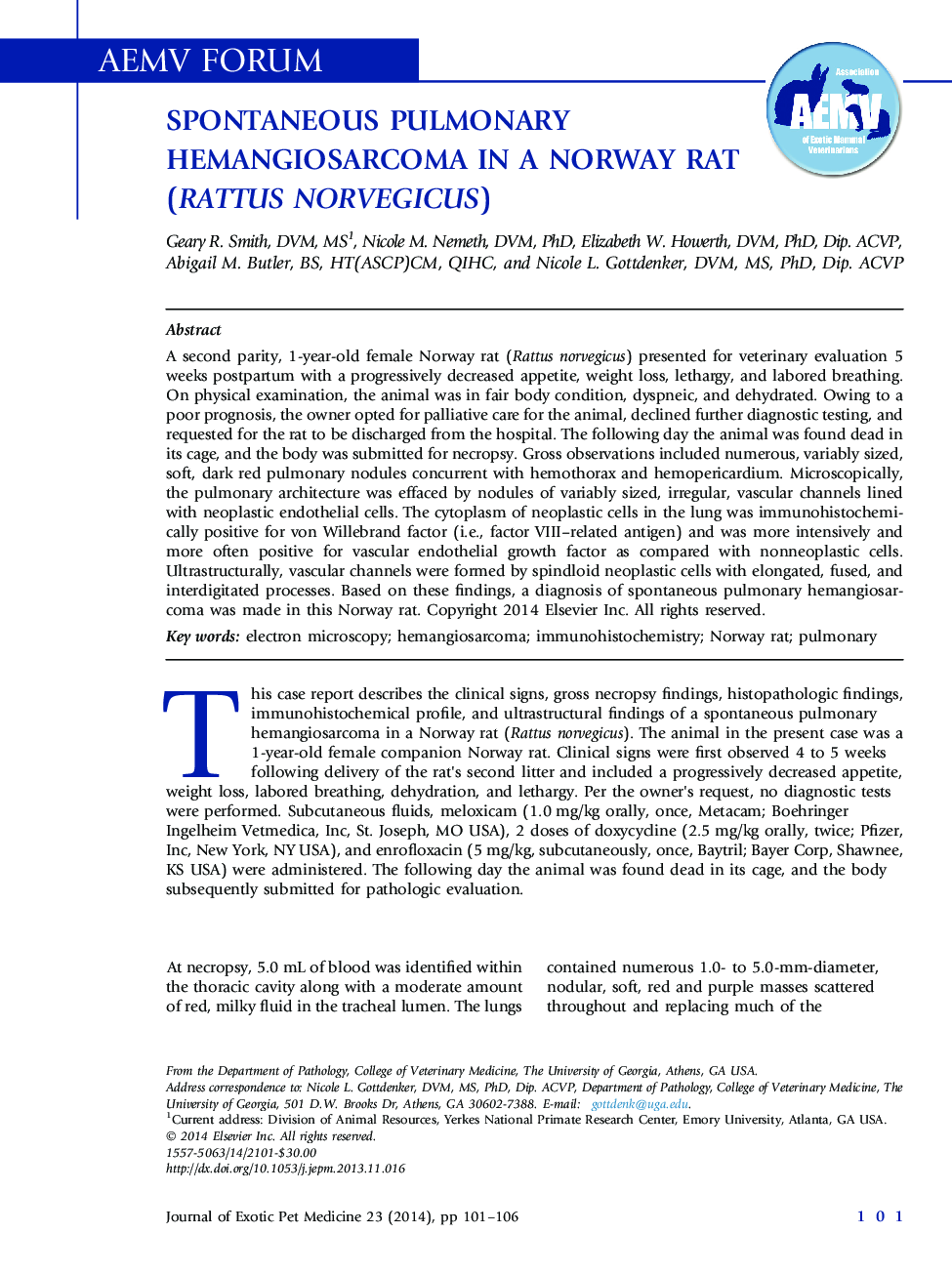| Article ID | Journal | Published Year | Pages | File Type |
|---|---|---|---|---|
| 2397127 | Journal of Exotic Pet Medicine | 2014 | 6 Pages |
A second parity, 1-year-old female Norway rat (Rattus norvegicus) presented for veterinary evaluation 5 weeks postpartum with a progressively decreased appetite, weight loss, lethargy, and labored breathing. On physical examination, the animal was in fair body condition, dyspneic, and dehydrated. Owing to a poor prognosis, the owner opted for palliative care for the animal, declined further diagnostic testing, and requested for the rat to be discharged from the hospital. The following day the animal was found dead in its cage, and the body was submitted for necropsy. Gross observations included numerous, variably sized, soft, dark red pulmonary nodules concurrent with hemothorax and hemopericardium. Microscopically, the pulmonary architecture was effaced by nodules of variably sized, irregular, vascular channels lined with neoplastic endothelial cells. The cytoplasm of neoplastic cells in the lung was immunohistochemically positive for von Willebrand factor (i.e., factor VIII–related antigen) and was more intensively and more often positive for vascular endothelial growth factor as compared with nonneoplastic cells. Ultrastructurally, vascular channels were formed by spindloid neoplastic cells with elongated, fused, and interdigitated processes. Based on these findings, a diagnosis of spontaneous pulmonary hemangiosarcoma was made in this Norway rat.
